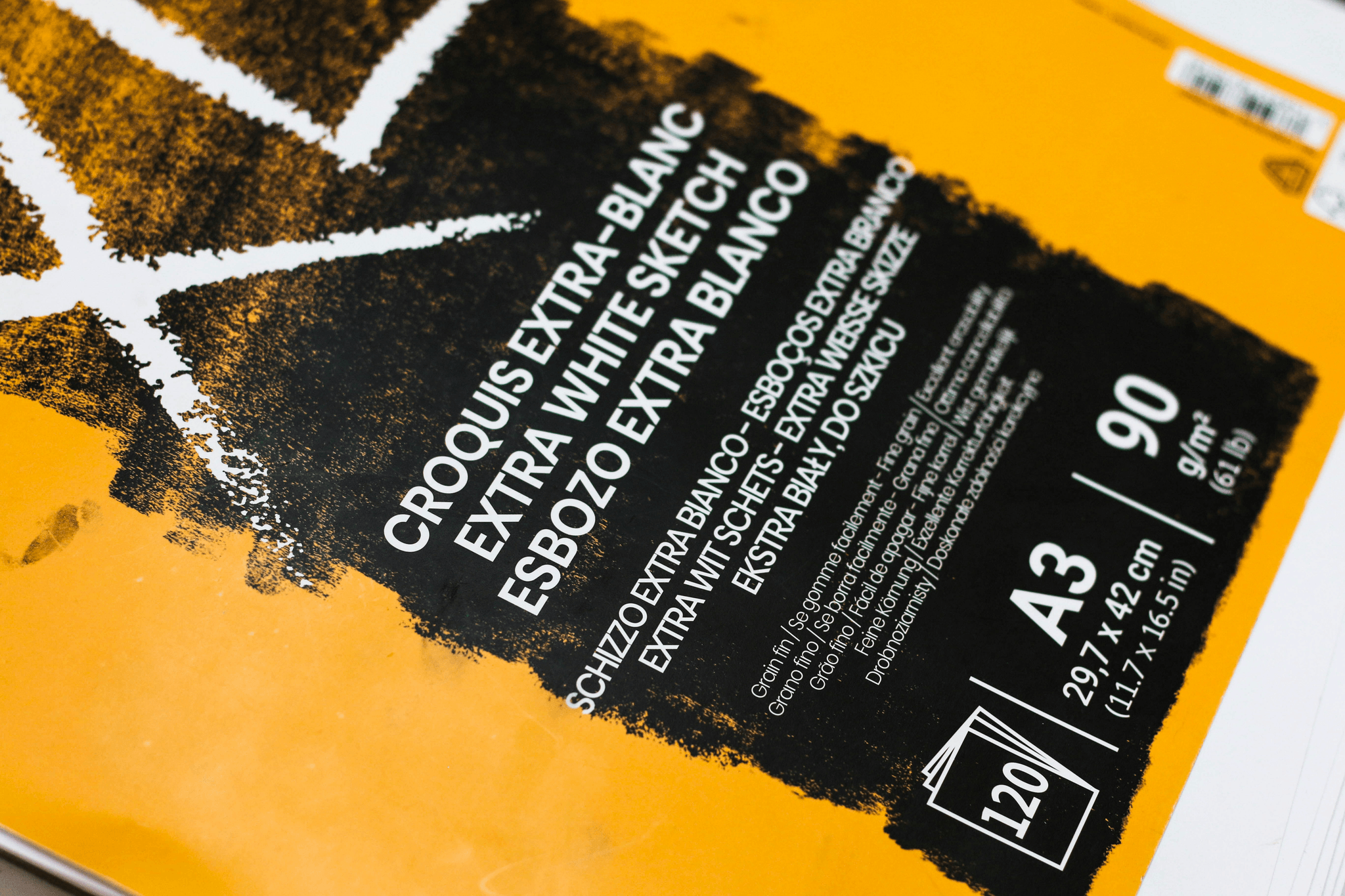Introduction
In the ever-evolving world of toy manufacturing, understanding CPSIA Tracking Label Requirements is not just a regulatory hurdle; it’s a vital component of product safety and consumer trust. The Consumer Product Safety Improvement Act (CPSIA) mandates that manufacturers adhere to specific tracking label standards, ensuring that toys are safe for children and traceable in case of recalls. By grasping the importance of these labels, manufacturers can navigate compliance with ease, ultimately enhancing their brand reputation.
Understanding CPSIA Tracking Label Importance
So, what is a CPSIA Tracking Label? It serves as a crucial identifier for toys and children's products, providing essential information about the product's origin and safety standards. This label not only protects consumers but also shields manufacturers from potential liabilities associated with non-compliance—making it an indispensable aspect of the toy industry.
Overview of CPSIA Tracking Label Requirements
The CPSIA Tracking Label Requirements outline what must be included on these labels to meet federal regulations. These requirements have evolved over time, reflecting changes in safety standards and consumer expectations. Manufacturers need to stay informed about these requirements to ensure their products are compliant and marketable.
Key Benefits of Compliance for Toy Manufacturers
Compliance with CPSIA regulations offers several key benefits for toy manufacturers, including enhanced consumer confidence and reduced risk of costly recalls. By adhering to labeling requirements, companies can establish themselves as trustworthy brands dedicated to child safety. Additionally, navigating changes in the CPSIA label regulations effectively positions manufacturers favorably in an increasingly competitive marketplace.
What is a CPSIA Tracking Label?

Definition and Purpose
So, what is a CPSIA tracking label? Essentially, it's a label that must be affixed to toys and children's products to provide essential information about the product's origin and safety standards. The purpose of this label is twofold: it helps ensure transparency in manufacturing processes and provides consumers with vital information should they need to report an issue or recall.
The CPSIA tracking label requirements stipulate that manufacturers include specific details such as batch numbers, production dates, and contact information. This allows for easier identification of products in case of safety concerns or recalls—think of it as your toy’s very own ID card!
Historical Context of CPSIA Compliance
The journey toward CPSIA compliance began after several high-profile recalls highlighted serious safety issues in children's products. The Consumer Product Safety Improvement Act (CPSIA) was enacted in 2008 as a response to these concerns, aiming to enhance consumer protection by enforcing stricter safety standards. Over time, changes in the CPSIA label regulations have evolved based on industry feedback and ongoing assessments of consumer needs.
Initially, compliance may have seemed overwhelming for manufacturers; however, these regulations have gradually clarified what products require a CPSIA label. The historical context underscores the importance of such labels—not only do they help prevent dangerous toys from reaching children’s hands but also foster trust between consumers and manufacturers.
Significance for Consumers and Manufacturers
For consumers, the significance of the CPSIA tracking label cannot be overstated—it provides peace of mind knowing that their toys meet stringent safety standards. When parents see this label on their children’s toys, they can feel confident that those products were manufactured responsibly and are traceable if any issues arise.
For manufacturers, adhering to CPSIA labeling requirements is not just about compliance; it's also about brand reputation and consumer trust. Companies that prioritize transparency through proper labeling can differentiate themselves in an increasingly competitive market while minimizing legal risks associated with non-compliance. Ultimately, everyone benefits when safety takes center stage!
Changes in the CPSIA Label Regulations

The landscape of CPSIA tracking label regulations is ever-evolving, and recent amendments have sparked significant discussions among manufacturers. These changes aim to enhance consumer safety and improve compliance measures, but they also come with challenges for those in the toy industry. Understanding these updates is crucial for manufacturers who want to stay ahead of the curve and ensure their products meet the CPSIA tracking label requirements.
Recent Amendments and Their Impact
Recent amendments to the CPSIA regulations have introduced stricter guidelines regarding what information must be included on a CPSIA tracking label. These changes are designed to provide clearer guidance on compliance, ultimately benefiting consumers by ensuring that toys are safe and traceable. As a result, manufacturers must now familiarize themselves with these updated requirements to avoid penalties and maintain their market reputation.
How Adjustments Affect Manufacturers
The increased specificity in what products require a CPSIA label means that some businesses may need to overhaul their existing labeling strategies entirely. This can lead to added costs and potential delays as companies scramble to align their operations with the new regulations while still meeting consumer demand.
Navigating the New Regulatory Landscape
Navigating this new regulatory landscape requires vigilance and adaptability from manufacturers aiming for compliance with CPSIA tracking label requirements. Staying informed about ongoing changes is essential; attending industry seminars or subscribing to relevant publications can be beneficial strategies. Moreover, understanding what information needs to be on the CPSIA label will empower manufacturers not only to comply but also build trust with consumers who prioritize safety when purchasing toys.
What Products Require a CPSIA Label?

Understanding the CPSIA Tracking Label Requirements is crucial for manufacturers in the toy industry. The Consumer Product Safety Improvement Act (CPSIA) mandates that specific products, particularly those aimed at children, must display a tracking label to ensure compliance and safety. This section will clarify which products fall under these requirements, dispelling myths and highlighting exceptions.
Toys and Children's Products Overview
The CPSIA Tracking Label Requirements primarily target toys and children's products designed for use by children aged 12 years or younger. These include items such as dolls, action figures, board games, and educational toys that are intended for play or learning purposes. Manufacturers must ensure that these products comply with the regulations to promote safety and accountability in their supply chains.
In recent years, changes in the CPSIA label regulations have made it even more important for manufacturers to stay informed about what is required. Not only do these labels help trace products back to their source in case of recalls, but they also provide consumers with peace of mind regarding product safety. Thus, understanding which products require a CPSIA label is essential for compliance and consumer trust.
Common Misconceptions About Labeling
One common misconception is that all children's products need a CPSIA tracking label; however, this isn't entirely accurate. While most toys do require labeling under the act, some items like clothing or certain household goods may not fall under this requirement unless they are specifically marketed towards children. Additionally, many believe that simply placing a label on their product guarantees compliance without understanding the necessary details of what information needs to be on the CPSIA label.
Another myth involves assuming that older toys manufactured before the enactment of CPSIA don’t need labeling; however, any toy still being sold must adhere to current regulations regardless of its age. This misunderstanding can lead manufacturers into hot water if they're not diligent about ensuring all applicable items meet today's standards. Proper education about these misconceptions can save businesses from costly mistakes related to non-compliance.
Specific Exceptions and Exemptions
While most toys require a CPSIA tracking label, there are specific exceptions worth noting within the regulations that could impact manufacturers' strategies significantly. For example, certain art supplies like crayons or paints intended for children may be exempt if they meet specific criteria outlined by regulatory bodies—this can often confuse manufacturers who might assume all art-related items require labeling when they don’t necessarily have to.
Additionally, small-scale handmade toys produced by individuals may also qualify for exemptions based on production volume or sales channels—these nuances highlight why it's crucial for businesses to thoroughly understand what qualifies under What is a CPSIA Tracking Label? Knowing these specifics can help avoid unnecessary costs associated with labeling non-required items while ensuring compliance where it matters most.
In summary, navigating through what products require a CPSIA label entails understanding both general requirements as well as exceptions that could apply based on product type or sales strategy—keeping up-to-date with changes in the CPSIA label regulations will ultimately support better decision-making processes across manufacturing operations.
What Information Needs to Be on the CPSIA Label?

A well-structured label not only adheres to regulations but also provides peace of mind for consumers and manufacturers alike. This section will delve into what constitutes a complete CPSIA Tracking Label, ensuring you’re equipped with the knowledge to meet these standards.
Essential Data Points Required
The CPSIA Tracking Label must contain specific data points that are non-negotiable under current regulations. At a minimum, labels should include the name and address of the manufacturer or private labeler, the date of production, and a unique identifying code for tracking purposes. Additionally, any relevant safety information or warnings regarding potential hazards associated with the product should be clearly stated to comply with What is a CPSIA Tracking Label? requirements.
Formatting Guidelines and Best Practices
Formatting your CPSIA label correctly is just as important as including all required information. The text should be legible and printed in a size that can easily be read by consumers; typically, this means using at least 6-point font size. Furthermore, labels should be durable enough to withstand wear and tear during shipping and use—think about how your products will be stored or displayed when considering Changes in the CPSIA Label Regulations.
Importance of Clarity and Accuracy
Clarity and accuracy cannot be overstated when it comes to your CPSIA label; any ambiguity could lead to compliance issues or consumer confusion. An incorrectly labeled product may not only result in regulatory penalties but could also tarnish your brand's reputation among consumers who prioritize safety in their purchasing decisions. By ensuring all information is clear and accurate on your tracking label, you can avoid pitfalls down the line—especially if you ever need to refer back to specific details during audits or recalls.
CPSIA Label Tracking Example/Toy Tracking Label Example

Understanding the practical application of CPSIA tracking labels is essential for toy manufacturers navigating the regulatory landscape. By examining real-world labeling scenarios, case studies from leading toy brands, and insights from China Inspection Pro, we can gain a clearer picture of compliance and its implications. This section will illuminate how effective CPSIA tracking labels can enhance product safety and consumer trust.
Real-World Labeling Scenarios
Imagine a popular toy brand launching a new line of plush dolls, each requiring compliance with CPSIA tracking label requirements. In one scenario, the manufacturer includes detailed information on the label such as batch numbers, manufacturing dates, and contact information for recalls. This proactive approach not only meets regulatory demands but also fosters consumer confidence by demonstrating transparency in safety practices.
Another example involves a board game company that faced an unexpected recall due to a small choking hazard in one of its pieces. Thanks to their well-structured CPSIA tracking labels, they quickly identified affected products and efficiently communicated with retailers and consumers about the issue. These scenarios highlight how crucial it is to understand what is a CPSIA tracking label and ensure that every product adheres to these standards.
Case Studies from Leading Toy Brands
Several leading toy brands have effectively navigated changes in the CPSIA label regulations while maintaining compliance and consumer trust. For instance, Brand X implemented an innovative labeling system that not only met the requirements but also enhanced their branding strategy by incorporating QR codes linking to safety information online. This forward-thinking approach exemplifies how manufacturers can leverage technology while adhering to what products require a CPSIA label.
Brand Y faced challenges when new amendments were introduced but adapted swiftly by revising their labeling process to include additional data points mandated by recent regulations. Their commitment to clarity in what information needs to be on the CPSIA label ensured they remained compliant while avoiding potential penalties or recalls. These case studies showcase how proactive measures can lead to successful navigation of regulatory changes.
Analytical Insights from China Inspection Pro
China Inspection Pro provides valuable analytical insights into how manufacturers can improve their understanding of CPSIA tracking label requirements through data-driven assessments. Their research indicates that companies that prioritize accurate labeling see significantly fewer compliance issues compared to those who treat it as an afterthought. Such insights reinforce the importance of knowing how to create a CPSIA tracking label correctly.
Moreover, China Inspection Pro emphasizes that awareness of recent changes in the CPSIA label regulations is crucial for staying ahead in this competitive market environment. Manufacturers are encouraged not only to comply with existing laws but also to anticipate future shifts in regulation regarding what products require a CPSIA label for continued success in e-commerce platforms like Amazon. Understanding these nuances empowers businesses with strategies for maintaining compliance while enhancing product quality.
Do Products Sold on Amazon Need to be CPSIA Compliant?

Navigating the world of e-commerce can be tricky, especially when it comes to compliance with regulations like the CPSIA Tracking Label Requirements. For sellers on platforms like Amazon, understanding these requirements is crucial to avoid potential pitfalls and ensure a smooth selling experience. In this section, we will explore Amazon's stance on CPSIA compliance, effective strategies for e-commerce success, and the importance of maintaining compliance in a competitive marketplace.
Amazon's Stance on CPSIA Compliance
Amazon takes product safety very seriously and requires that all toys and children's products comply with applicable safety regulations, including the CPSIA Tracking Label Requirements. This means that any product sold on their platform must have a valid CPSIA tracking label if it falls under the category of toys or children's items. Sellers are responsible for ensuring their products meet these standards; otherwise, they risk having their listings removed or facing penalties.
The platform also provides guidelines for sellers regarding what constitutes compliance with CPSIA regulations. Understanding what is a CPSIA tracking label becomes essential here; it’s not just about slapping a label on your product but ensuring that it contains all necessary information as outlined in the latest changes in the CPSIA label regulations. By adhering to these guidelines, sellers can maintain their standing within Amazon's marketplace while protecting consumers.
Strategies for E-commerce Success
To thrive in an environment where compliance is key, toy manufacturers should implement robust strategies that prioritize adherence to CPSIA requirements from the get-go. First and foremost, familiarize yourself with what products require a CPSIA label; this knowledge will help you avoid costly mistakes right out of the gate. Additionally, consider leveraging technology to streamline how you create your CPSIA tracking labels—there are numerous tools available designed specifically for this purpose.
Another effective strategy involves staying updated on any changes in the CPSIA label regulations so you can adapt quickly as needed. Regularly reviewing your labeling processes ensures that you're aligned with current standards and helps you avoid common pitfalls associated with non-compliance. Lastly, engaging directly with resources like China Inspection Pro can provide insights into best practices based on real-world labeling scenarios from leading toy brands.
Importance of Maintaining Compliance
Maintaining compliance with CPSIA Tracking Label Requirements is not just about avoiding penalties; it's also about building trust with consumers who prioritize safety above all else when purchasing toys or children's products online. When customers see that your product meets these stringent requirements—backed by clear labeling—they're more likely to make a purchase and recommend your brand to others.
Moreover, non-compliance can lead to significant financial repercussions including returns, lost sales opportunities, and potential lawsuits if safety issues arise after purchase. Therefore, understanding what information needs to be on the CPSIA label is vital for protecting both your business interests and consumer welfare alike. Ultimately, making sure you're compliant allows you not only to sell safely but also effectively within an increasingly crowded online marketplace.
Conclusion
In wrapping up our exploration of CPSIA Tracking Label Requirements, it's essential to emphasize the significance of understanding what a CPSIA Tracking Label is and the changes in the CPSIA label regulations over time. Compliance not only safeguards your brand but also enhances consumer trust, ensuring that your products meet safety standards. With clarity on what products require a CPSIA label and the necessary information that must be included, manufacturers can navigate this regulatory landscape with confidence.
Recap of CPSIA Label Essentials
Throughout this discussion, we've highlighted the core elements surrounding CPSIA Tracking Label Requirements. We delved into what constitutes a CPSIA tracking label, its historical context, and why it matters for both consumers and manufacturers alike. Additionally, we examined recent changes in the CPSIA label regulations that affect how toys and children’s products are labeled, along with common misconceptions about which products need these labels.
The Role of China Inspection Pro in Compliance
China Inspection Pro plays a pivotal role in helping manufacturers understand and adhere to CPSIA Tracking Label Requirements effectively. By providing resources and insights into what information needs to be on the CPSIA label, they ensure compliance is not just a checkbox exercise but an integral part of product quality management. Their expertise assists businesses in creating accurate labels while avoiding common pitfalls associated with how to create a CPSIA tracking label.
Final Thoughts on Maintaining Product Quality
Maintaining product quality goes hand-in-hand with understanding whether products sold on Amazon need to be CPSIA compliant or not. As e-commerce continues to grow, ensuring compliance becomes even more critical for online success—especially when it comes to children's toys where safety is paramount. By staying informed about labeling requirements and embracing best practices from case studies like those from leading toy brands or practical examples like our toy tracking label example, manufacturers can foster trust with consumers while safeguarding their reputation.
